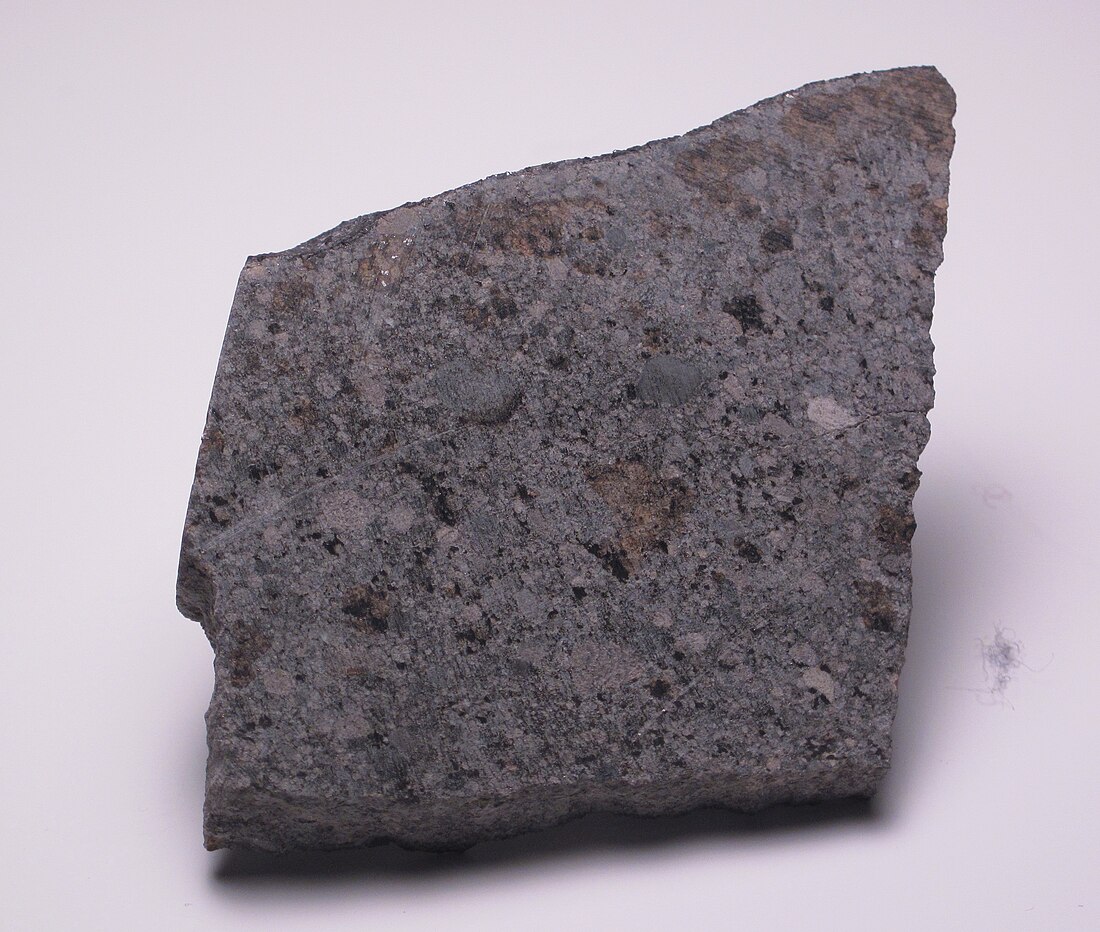Top Qs
Timeline
Chat
Perspective
Homestead (meteorite)
Meteorite found in the United States From Wikipedia, the free encyclopedia
Remove ads
Homestead is a L5 meteorite fallen on 12 February 1875 in Iowa, United States, first described by Gustavus Detlef Hinrichs. Sometimes called the Amana meteorite because of the nearby Amana Colonies it was called the Homestead meteorite, because Homestead, Iowa was the nearest train station. The Amana meteorites also include a large meteorite fallen in May 1879.
Remove ads
History
Summarize
Perspective
On the evening of 12 February 1875 above Iowa a brilliant fireball was observed. It produced a variety of rumbling sounds and detonations, which shook houses "as if moved by an earthquake".[2]
About 100 meteorite fragments fell over a 18-square-mile (47 km2) snowy countryside area from Amana to Boltonville in Iowa County.[3]
The first found fragment, a stone weighing about 3.5 kilograms (7.7 lb), was discovered by Sarah Sherlock 3 kilometres (1.9 mi) south of Homestead.[3] The area was wooded and covered by snow, impeding recovery efforts. On 10 February a 40 centimetres (16 in) snowfall blanketed the ground, preventing the great majority of the fragments from being discovered until spring. The 74 pounds (34 kg) main mass was found along with a 48 pounds (22 kg) fragment buried 2 feet (0.61 m) in the soil.[3]
The meteorite made international news. Gustavus Detlef Hinrichs, a natural scientist from the University of Iowa reported about it in Popular Science Monthly in 1875.
As of December 2011, approximately 230 kilograms (510 lb) has been found.[citation needed]
The meteorite has brought "a small fortune" to the Amana area, as pieces were sold for a day s wage per pound at the time and added to collections in the US and Europe.[2]
1879
The Amana meteorites also include a large meteorite fallen in Estherville, Iowa on May 10, 1879. Its largest piece weighed 437 pounds and buried 14 feet deep into a farm field. It is the largest witnessed meteorite in North America.[2] The largest piece can be visited at the Estherville Meteorite Center, in downtown Estherville.[4]
- Homestead meteorite strewnfield
- 1875 drawing of some fragments
- Crusted edge
Remove ads
Composition and classification
It is a L5 type ordinary chondrite. It is also brecciated and veined.[citation needed]
See also
References
Bibliography
External links
Wikiwand - on
Seamless Wikipedia browsing. On steroids.
Remove ads




